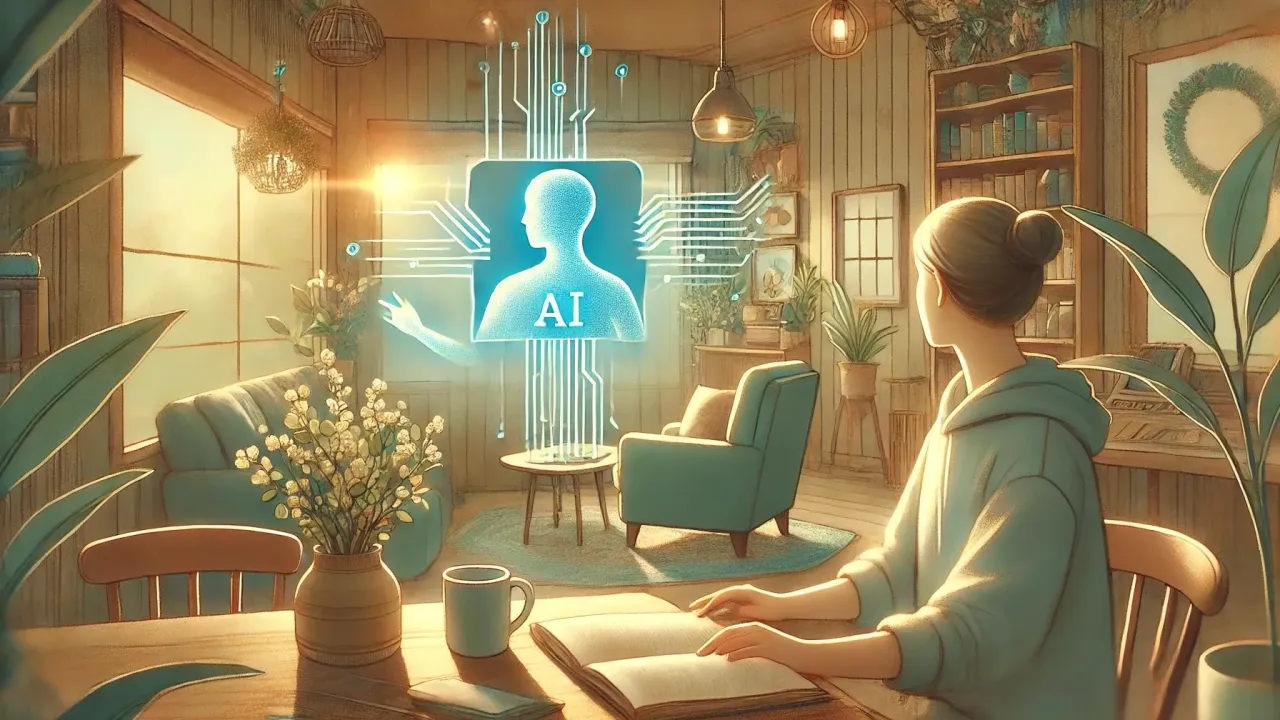
Writing isn’t always easy when your brain works differently. For me, the challenge isn’t having ideas—it’s getting them out in a way that makes sense. AI isn’t replacing my voice—it’s helping me hear it more clearly.
Using AI as an assistant removes the possibility of judgment. It reduces the stigma.
For disabled people—especially those of us who struggle with cognitive load, executive function, or brain fog, writing isn’t just about putting words on a page. It’s about overcoming invisible barriers that others might not see. I live with autoimmune conditions and ADHD, both of which can make it difficult to translate thoughts into words, especially when fatigue or brain fog sets in. When those barriers make it difficult to organize thoughts or express ideas, it’s easy to feel self-conscious. The fear of sounding unclear, scattered, or “not smart enough” can be paralyzing, and that fear often leads to silence.
The Intersection of AI and Accessibility
AI is unlike any accessibility tool we’ve had before. It’s not just about communication—it’s about helping people find their voice. Without AI, I wouldn’t be writing this right now. Maybe I wouldn’t be writing it ever. I don’t know. What I do know is that I’m thankful for this tool, because it’s allowing me to express thoughts that would otherwise stay locked inside my head.
That’s what accessibility really is. Not just making things possible, but making them reachable. AI doesn’t just help me put words on a page, it helps me claim my space in the conversation.
How AI Helps Bridge the Gap Between Thoughts and Words
When I sit down to write, the ideas are there. I can see them, feel them, understand them. But sometimes, getting them into a structured form feels like trying to herd soot sprites from My Neighbor Totoro, the moment I reach for them, they scatter. The connections exist, but articulating them in a way that makes sense to someone else? That’s where the struggle begins.
I used to be able to write without help. The words came more easily, and I didn’t need a tool to bridge the gap between my thoughts and the page. That’s changed, and I only partially understand why. But what I do know is that AI is giving me a way forward—and for that, I’m grateful.
This is where AI becomes more than just a tool—it becomes a collaborator. I have a project called “Communication Help” for moments when all I can do is brain-dump an idea without worrying about structure. I throw my raw, unfiltered thoughts into AI, and it helps me shape them into something coherent. Sometimes, I need help organizing my thoughts, so I’ll feed in a tangled mess of concepts and let AI suggest a structure. Other times, I’ll have a sentence that doesn’t quite feel right, and AI can refine it without stripping away my voice. And on the hardest days—when brain fog makes words dart around like mischievous little sprites—AI helps me get unstuck by giving me something to react to, nudging my thoughts back into motion.
The difference between using AI and asking a person for help is simple: there’s no pressure. AI doesn’t need me to explain why I’m struggling. It doesn’t get impatient. It doesn’t expect me to have things figured out before I start. It just meets me where I am, making the process of writing feel less like a battle and more like a conversation.
AI as an Accessibility Tool, Not a Replacement
In fact, this very article is an example of what I mean. As I write, I’m not just feeding AI a command and passively accepting what it gives me. I’m engaging with it, refining my thoughts, bouncing ideas back and forth. It’s a conversation—one that helps me capture the thoughts that might otherwise slip away. AI isn’t replacing my voice; it’s helping me hear it more clearly.
But this level of support doesn’t happen instantly. AI isn’t just a tool—it’s a tool that learns. It doesn’t just follow commands; it adapts to how I think, how I write, and how I refine my ideas. The more I use it, the better it understands what kind of help I actually need. No other tool has ever worked with me like this—meeting me where I am and shaping itself to fit me. It’s not perfect, and sometimes it still gives me something that doesn’t fit. But that’s part of the process. Just like any good accessibility tool, it works with me, not just for me.
This is why AI shouldn’t be dismissed as just a convenience or a shortcut. For many of us, it’s an accessibility tool—one that removes barriers, reduces stigma, and creates new ways for disabled people to express themselves. Writing is just one example, but the implications stretch far beyond that. AI has the potential to bridge gaps in communication, cognitive processing, and executive function in ways we’re only beginning to understand.
But for AI to truly be an accessibility win, it has to be built with disabled people in mind—not as an afterthought, but as part of its foundation. Because at its best, AI isn’t about doing the work for us. It’s about giving us the tools to do it ourselves.